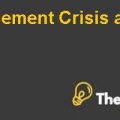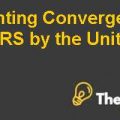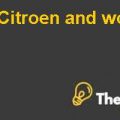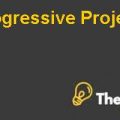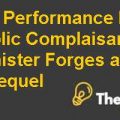
Introduction
Intel Corporation started by the two physicists Robert Noyce and Gordon Moore in 1968, was earlier known as NM Electronics extracted from the initials of the sir names of the two founders. Later, keeping in mind the business description of the company, which was manufacturing Integrated Electronics the founders, revamped it to Intel. Intel is now a giant name in the industry, which deals with enormous customers running the PC market such as Dell and Hewlett Packard. Intel’s road to success is ferocious around the spectrum given its fast paced disruptive innovation technique that has helped it to back off the competition.
Intel is the largest semiconductor manufacturer as of 2005 around the globe, supplies 80% of the CPU’s used in PCs, servers and workstations which accumulate almost 90% of the company’s profits. With competitors like AMD whose fabrication plants were spread around the globe, further it relied on the third party for foundry arrangements in the United Sates unlike Intel who had its Assembly Testing Lines abroad due to which it had to bear high freight costs too. Furthermore, the AT plants used less capital intensive and advanced technology than one used in production of chips.
Intel was expanding its wafer by 100mm more that is from 200mm to a 300mm wafer to improve efficiency and allow more chips per wafer. This required the company to increase labor, as wafer manufacturing was a semi-labor intensive. And it needed the labor that was highly skilled. For that, the company needed a plant for which there were four alternatives to consider with each having its own pros and cons. As the company wasn’t allowed to have more than 40% revenues from one facility the company plans to construct a new facility, keeping in mind the footprint they want and the transportation costs they would incur.
Pertinent Facts & Assumptions
According to the criteria set forth by Intel for the site selection for the purpose of constructing the new plant can be summarized by looking at Exhibit 4 of the case. The exhibit suggests that reliability and quality of the power supply have to be 100% and the average price for the electricity rate that falls in the tolerance level is an average of ($10:low+$20:high/2)$15 kwh. In addition to all this, the power of infrastructure that is needed by the firm should cost nothing for completely new substation and redundancy, an average capacity of (40MVA3:Low+80MVA3:High/2) 60MVA3 .The water and sewerage infrastructure also needs to be at nil cost for water rights & waterlines and public operated treatment works respectively. And lastly the power, water and sewerage infrastructure timing needs to be ready for starting the construction. Further facts are inclusive of the semiconductor industry, provided that Intel is planning to open a new plant in the proposed sites; these figures would be insightful to include:
- The semiconductor industry accommodates many product segments with chip manufacturing being the largest of all.
- The industry alone accumulated $226 billion around the globe, and $17.5 billion alone from U.S. by a drifting demand in the consumer products like PCs, cell phones, digital cameras etc.
- The industry included three incumbents who operated on either of the three business models IDMs, Fabless and Fab-Lite.
- Intel being an IDM focuses on a major product line that is microprocessors.
- The fabrication units require capital investment on tools used in manufacturing at the production floor, with one tool performing one step and each manufacturing involving as many as 300 steps.
- Tools used in manufacturing microprocessor, costs millions of dollars.
Problem Identification
Intel’s General Manager needs to present his analysis on the four mentioned alternatives that include China, Thailand, Vietnam and India for establishing its new Assembly Testing Plant. While evaluating the alternatives the manager needs to keep in mind that the proposed location should meet Intel’s criteria for the facility’s location plus the Intellectual Property concerns of operating at a place where the United States forbids to.
Analysis of the Alternative Solutions
China: Dalian
China has a history of attracting foreign investment into its country through lax regulations, low labor costs and an efficient and skilled workforce. Intel already operates two of its facilities in China, one at Chengdu and the other at Pudong. The country also has affiliations with WTO, which solidifies their position in the market, and strengthens their position to resolve the issues related to intellectual property rights................
This is just a sample partial case solution. Please place the order on the website to order your own originally done case solution.
In mid-2005, Intel is considering its options for where to place your next assembly and testing plant. On his short list of potential sites include locations in China, India, Thailand and Vietnam. Each country has its own unique advantages and risks associated with infrastructure, management, education, culture, business, intellectual property, labor markets, experience with Western firms, as well as tax breaks and other incentives. Intel CEO to build and test, Brian Krzanich, must take into account all these factors, as well as criteria for Intel for its location for the new facility and to make its recommendations to the Board of Directors. What country and place of Intel should I choose? "Hide
by Juan Alcacer, Kerry Herman Source: Harvard Business School 20 pages. Publication Date: September 19, 2012. Prod. #: 713406-PDF-ENG

